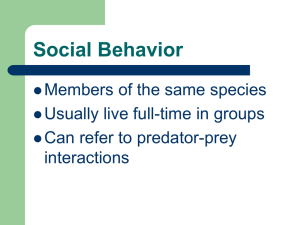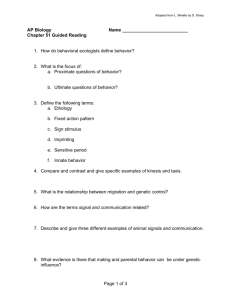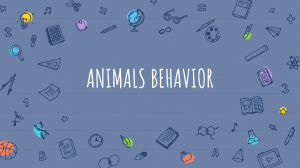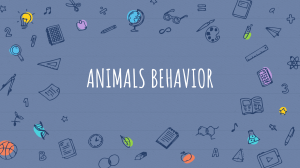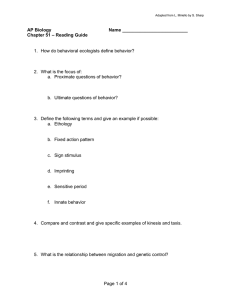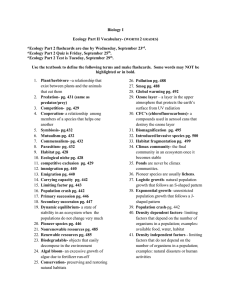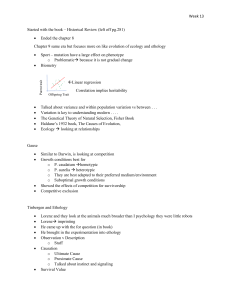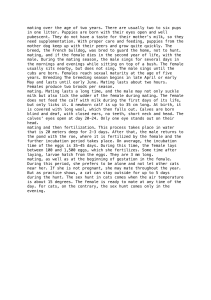Animal Behavior Mrs. Rightler
advertisement
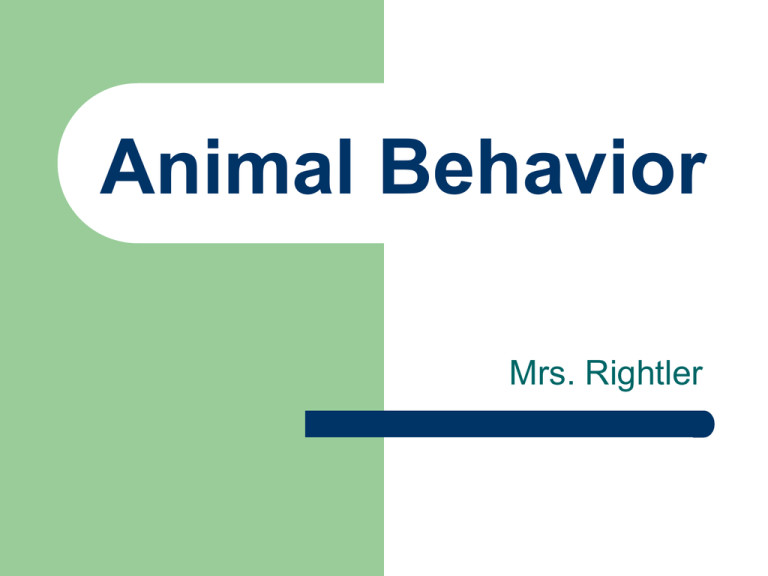
Animal Behavior Mrs. Rightler Methods of Study Comparative psychology Ethology Behavioral ecology Sociobiology Instinct Basic set of behaviors present at birth May need a trigger Behavior improves or changes with experience Maturation Behavior seen after a period of development has occurred Improvement or change not based on experience but on time Ex. Tadpole swimming techniques Imprinting Konrad Lorenz Critical time period ONLY Young animal develops attachment to another animal or object Rapid learning Learning Habituation Animal trained to ignore stimuli Dog examples Classical Conditioning Pavlov’s dog Animal learns to respond to particular stimuli Basic obedience training Instrumental Conditioning Trial-and-error Skinner learning Box Behavior can be “shaped” Latent Learning Exploratory learning No obvious reward Helps animal learn about its surroundings Insight Learning Animal uses experiences and thinking to solve problems. Tool use Primates Behavior is Controlled by: Nervous system Endocrine system – Organizational effects – Activational effects Animal Communication Transfer of information from one animal to the other (both must be mutually adapted) Visual Auditory Tacticle Chemical Behavioral Ecology Habitat Selection Two factors influence habitat choice – Physiological – Psychological Finding Food Foraging Behavior Process of locating food resources Cost vs. benefit analysis – Handling time – Nutritional value – Status value – Concentration/density Specialists vs. Generalist Social Behavior Members of the same species Usually live full-time in groups Can refer to predator-prey interactions Group Living society – stable group of individuals of the same species that have cooperative relationships outside of mating and raising young. Invertebrates and vertebrates Animal Advantages to Group Life Protection from predators Increase feeding efficiency Protection from elements Easy access to potential mates Mating Behavior Disadvantages of Group Life Competition Diseases Parasites for resources Aggression Agonistic behavior Attacks Threat displays Maintains territory Maintains dominance hierarchy Altruism Individual sacrifices reproductive potential for the benefit of others in the group – Honeybees – Turkeys – Naked Kin mole rats selection
